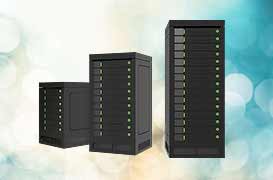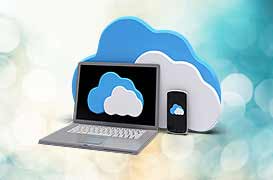What is an EDMS? Unpacking the Concept
At its core, an EDMS is a management tool, a specialized form of document management software designed to help its users organize, store, manage, and retrieve digital or paper documents throughout their lifecycle. While historically focused on digitizing paper, modern EDMS are fundamentally built for the digital age. Although the EDMS is specially designed to handle digital documents, it is also sometimes used for paper documents, typically by incorporating scanning and OCR capabilities. The software can likewise handle digital scanned copies of original paper documents, transforming them into searchable, manageable digital assets.
The fundamental purpose extends beyond simple storage. An EDMS provides a structured framework for handling information, breaking down data silos, ensuring consistency, enforcing security protocols, and facilitating collaboration. It addresses common pain points like lost documents, version confusion, inefficient approval processes, and compliance risks associated with poorly managed information.
With the EDMS, you can store a large volume of digital documents centrally, and solutions like LogicalDOC are designed with great features for proper efficiency! This centralization is key, creating a single source of truth accessible to authorized users across the organization.
Core Capabilities of a Modern EDMS
A comprehensive EDMS offers a suite of integrated functionalities:
- Document Capture: Ingesting documents from various sources, including scanners (with OCR to make text searchable), emails, office applications, business systems (like ERP or CRM), and direct user uploads.
- Centralized Storage & Repository: Providing a secure, unified location for all managed documents, replacing scattered network drives or local storage.
- Metadata Management: Enabling the tagging of documents with descriptive information through metadata & templates, such as author, date, document type, status, keywords, or project codes. This is crucial for organization and retrieval.
- Indexing and Search: Powerful search capabilities such as full-text indexing and document searching allow users to find documents quickly based on content (full-text search) or metadata. Advanced search options might include fuzzy search, proximity search, or filtering by various criteria.
- Version Control: Automatically tracking document changes with version control, storing previous versions, and preventing users from accidentally overwriting work. Document & version comparison helps during reviews.
- Security and Access Control: Implementing granular permissions to control who can view, edit, delete, or share specific documents or folders, often integrated with existing directories. Strengthen protection with two-factor authentication and simplify access via single sign-on (SSO).
- Workflow Automation: Designing and automating document-centric processes using workflow for review and approval cycles, contract management, invoice processing, and routing documents to the right people at the right time.
- Audit Trails: Logging actions performed on documents (viewing, editing, downloading, deleting) to provide a detailed history for accountability and compliance purposes; administrators can supervise background jobs via the task manager.
- Collaboration Tools: Features that allow multiple users to work on documents seamlessly, including check-in/check-out, annotations, reading confirmation, and secure sharing via email or download tickets.
- Records Management: Applying retention policies, managing legal holds, and ensuring compliant disposal of documents according to regulatory requirements and internal policies. Archiving supports long-term preservation.
- Integration Capabilities: Connecting with other business systems (ERP, CRM, HRIS, email), and extending productivity with the Microsoft Outlook add-in, Microsoft Office add-in, WordPress Explorer, and Joomla Explorer. File exchange can be automated through the LogicalDOC Connector (FTP/FTPS), hot folders, and LogicalDOC Sync.
The Crucial Role of Metadata
To ensure that digital documents are classified accordingly, many information systems rely on a comprehensive process for storing documents, with certain elements known as metadata inclusive. Metadata is essentially "data about data." In an EDMS context, it provides structure and context to unstructured documents. With the metadata around a document, easy access to essential details is provided to those who are looking for what they need in archives; be it by keywords, chronology, topic, or other related strategies. Effective metadata strategies built on metadata & templates and supported by automated capture like zonal OCR enable powerful filtering, sorting, and searching, transforming a chaotic digital pile into an organized, accessible knowledge base. Most times, the precise documentation for original storage protocols and metadata schema is an essential part of what rates an electronic document management system so valuable to an organization or a business.
EDMS vs. CMS: Understanding the Differences
A number of similarities have been drawn between the EDMS and the Content Management System (CMS) by some experts, however, some differences have been spotted as well. For instance, one main difference between these two software is that the EDMS is basically used for archiving, workflow, and managing internal business documents and records, while the Content Management System is typically used to handle a number of web contents centrally – that is, from a central website or portal. While both manage "content," their primary focus and feature sets often differ. EDMS excels at managing the document lifecycle, ensuring compliance, and supporting internal business processes with capabilities like workflow, version control, and records retention. CMS excels at creating, managing, and publishing content for websites, intranets, or extranets. Often, a broader term, Enterprise Content Management (ECM), encompasses both EDMS and CMS functionalities, along with other capabilities like web content management (WCM) and digital asset management (DAM).
LogicalDOC: A Practical EDMS Example
LogicalDOC serves as a concrete example embodying many core EDMS principles. Our document management software contains a web-based user interface that performs operations including file sharing, setting security roles, and finding and auditing enterprise records and registers. This web accessibility is crucial for modern, often distributed, workforces.
By using a document management system like LogicalDOC, users can easily communicate and collaborate with one another. Documents are not created or consumed in a vacuum – information is created for a purpose! Furthermore, the flow of documents through the business cycle can be tracked and managed, from sharing and collaboration, through approval, to reviews and revisions. Even if you start from paper documents, you can digitalize them using scanning and OCR, and then let the document management software handle their conversion into digital documents and organization in filing cabinets, enhanced by auto naming & auto folding.
From the LogicalDOC web-based interface, it is possible to run multiple tasks including: file sharing, setting security roles, searching and checking company records and registers. LogicalDOC puts the knowledge worker in condition to find, use, share, and secure valuable corporate content. Information assets contribute to the constant flow of business, and collaboration on new or existing documents is central to how users engage with corporate knowledge. A secure, interactive archive connects teams to critical information, even across the most decentralized organizations. Teamwork is supported by check-in/check-out, annotations, and guided approvals with workflow and reading confirmation.
Share and Collaborate: The Evolution of Document Management
In the last 15 years, document management solutions evolved significantly from simple document imaging to more complex tasks like workflow automation, auditing, and collaboration. The focus shifted from merely storing documents to actively leveraging them as knowledge assets. Nowadays our enterprise document management system (EDMS) helps your employees save time by finding the correct information exactly when needed via full-text indexing and advanced searches. LogicalDOC implements both content management and records management and can manage all of your organization's documents and valuable intelligence in a secure archive that spans the entire company.
Deployment Models: Tailoring EDMS to Organizational Needs
EDMS solutions, including LogicalDOC, offer flexibility in how they are deployed:

1. Stand Alone (On-Premise Single Server)
You have the system in place into your Server (Windows, Linux or macOS operating systems) with local file systems. LogicalDOC comes with an embedded database and doesn't require the installation of additional components in this basic setup. This offers maximum control over the environment but requires managing the infrastructure in-house.

2. Shared Server (On-Premise Centralized)
The best use of LogicalDOC for many organizations is as a shared service. You can install LogicalDOC on a central server that is accessible to all the workstations in your organization. This approach allows you to easily store documents in a central repository, facilitating shared access while still maintaining control over the server environment.

3. LogicalDOC Cloud (SaaS)
This is the cloud-based approach. This solution allows you to use LogicalDOC hosted on their servers (cloud storage) without having to install anything locally. It's typically accessed via a web browser and is always online 24/7. This Software-as-a-Service (SaaS) model reduces the IT overhead for maintenance and infrastructure but relies on the provider for uptime and security.
The choice between on-premise and cloud often depends on factors like budget, IT resources, security requirements, scalability needs, and regulatory constraints. Hybrid models, combining elements of both, are also possible.
Benefits Beyond Organization
Implementing an EDMS delivers tangible advantages:
- Improved Efficiency: Faster document retrieval, streamlined processes using workflow, reduced manual handling.
- Enhanced Security: Controlled access, two-factor authentication, reduced risk of data breaches.
- Better Compliance: Easier adherence to regulatory requirements (e.g., GDPR, HIPAA, SOX) through records management and audit logs.
- Reduced Costs: Savings on physical storage space, paper, printing, and administrative overhead.
- Improved Collaboration: Easier sharing via email/download tickets and co-authoring with check-in/check-out and annotations.
- Disaster Recovery: Centralized digital storage is more straightforward to back up and recover than scattered paper or digital files, aided by backup and multi-volume storage.
- Better Decision Making: Faster access to accurate, up-to-date information via full-text indexing and search.
Implementation Considerations
While powerful, deploying an EDMS requires careful planning:
- Needs Assessment: Clearly define the problems to be solved and the required features.
- Vendor Selection: Choose a system that aligns with requirements and budget.
- Planning & Configuration: Design folder structures, metadata templates, workflows, and user permissions.
- Data Migration: Plan the transfer of existing documents into the new system. Folder import and document delivery (export/import archives) can help.
- User Training & Adoption: Change management is critical; users must understand the benefits and how to use the system effectively, including check-in/check-out and annotations.
- Integration: Plan how the EDMS will connect with other applications, leveraging add-ins like Outlook and Office.
The Future of EDMS
The EDMS field continues to evolve, driven by technological advancements: AI and robots for automated metadata tagging and document classification, and ChatGPT integration for intelligent information discovery and interaction. Cloud adoption remains strong for scalability and accessibility, while user experience benefits from more intuitive interfaces and better mobile access.
A Strategic Approach
An Enterprise Document Management System is far more than a digital filing cabinet. It is a strategic tool for controlling information chaos, enhancing productivity, mitigating risk, and enabling collaboration in the digital age. By providing structure, security, and accessibility to vital corporate information, solutions like LogicalDOC empower organizations to harness their knowledge assets effectively, driving efficiency and better business outcomes in an increasingly complex information environment.
